Click here and press the right key for the next slide.
(This may not work on mobile or ipad. You can try using chrome or firefox, but even that may fail. Sorry.)
also ...
Press the left key to go backwards (or swipe right)
Press n to toggle whether notes are shown (or add '?notes' to the url before the #)
Press m or double tap to slide thumbnails (menu)
Press ? at any time to show the keyboard shortcuts
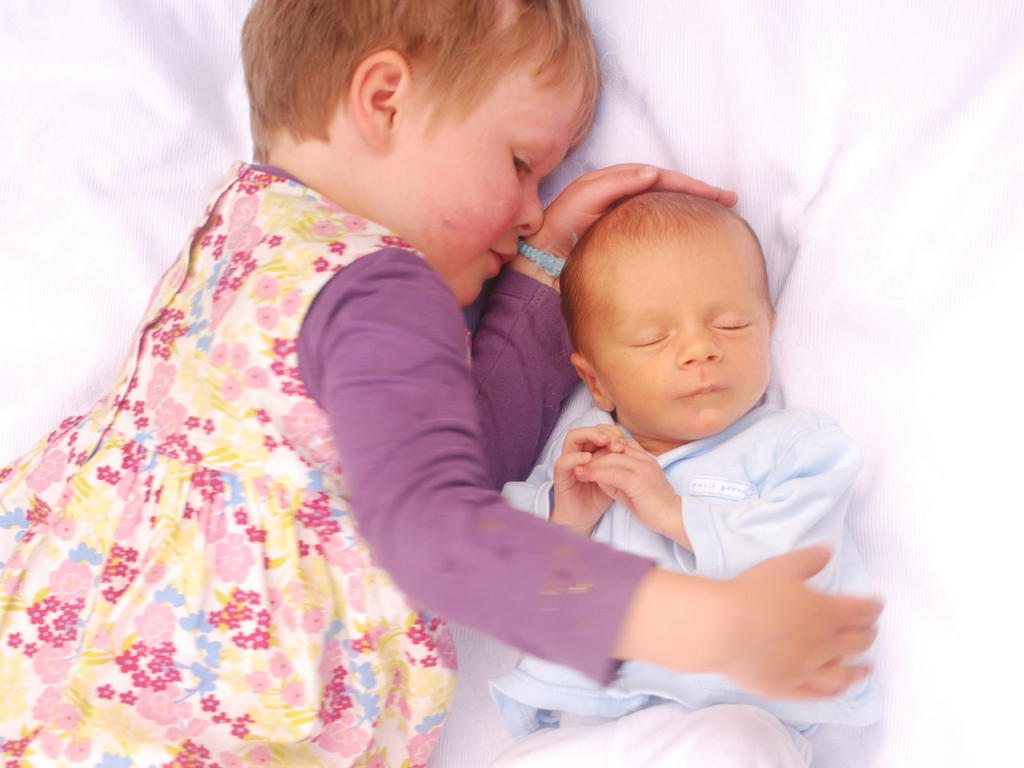
Motor Representation
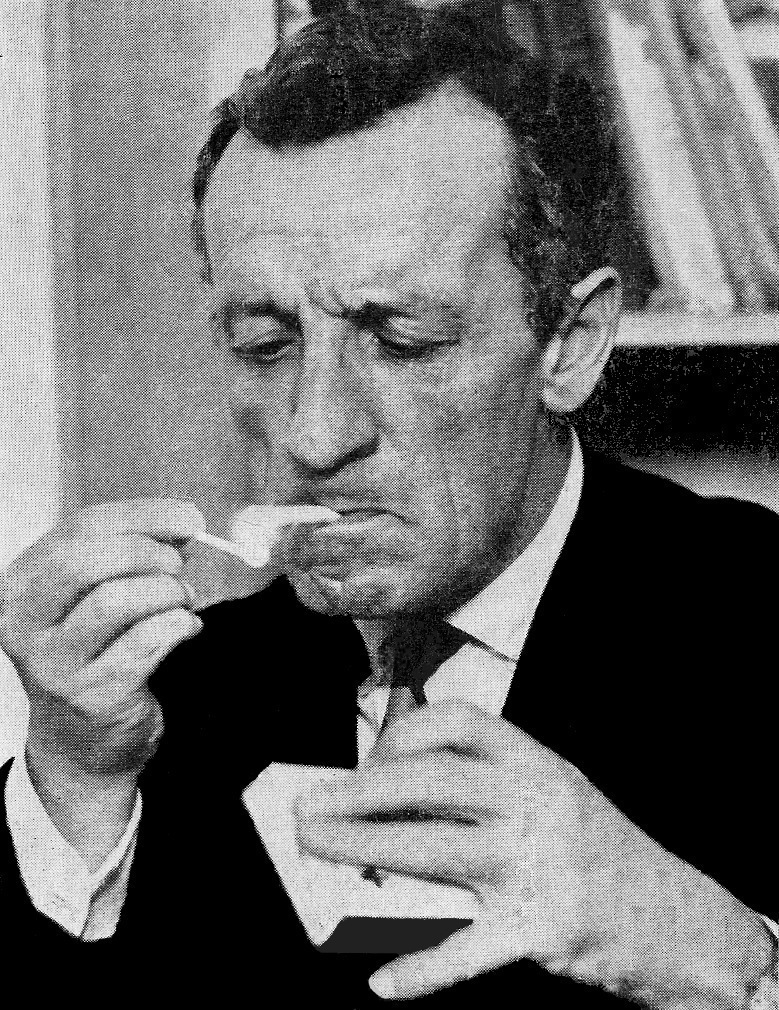
‘From the outset the grasping movement is magically at its completion; it can begin only by anticipating its end, since to disallow taking hold is sufficient to inhibit the action.’
(Merleau-Ponty, 2012, p. 119)

some
motor representations (/schema) represent ???outcomes = goals
‘a given motor act may change ... as a function of what motor act will follow it—a sign of planning’
Cohen & Rosenbaum 2004, p. 294
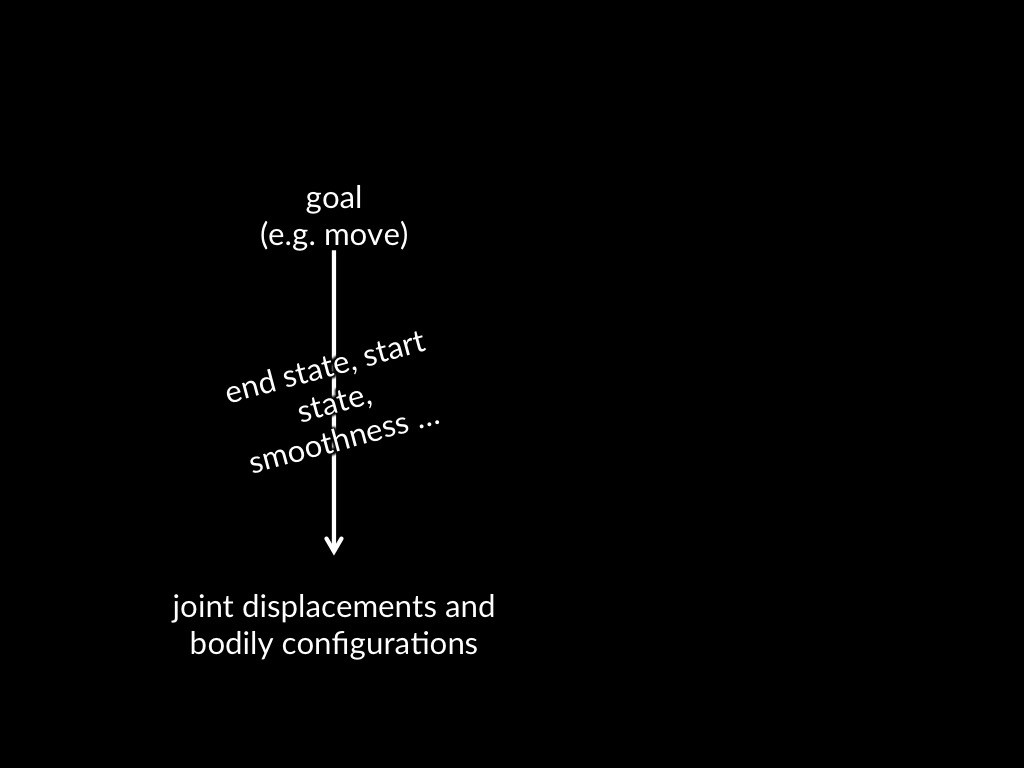
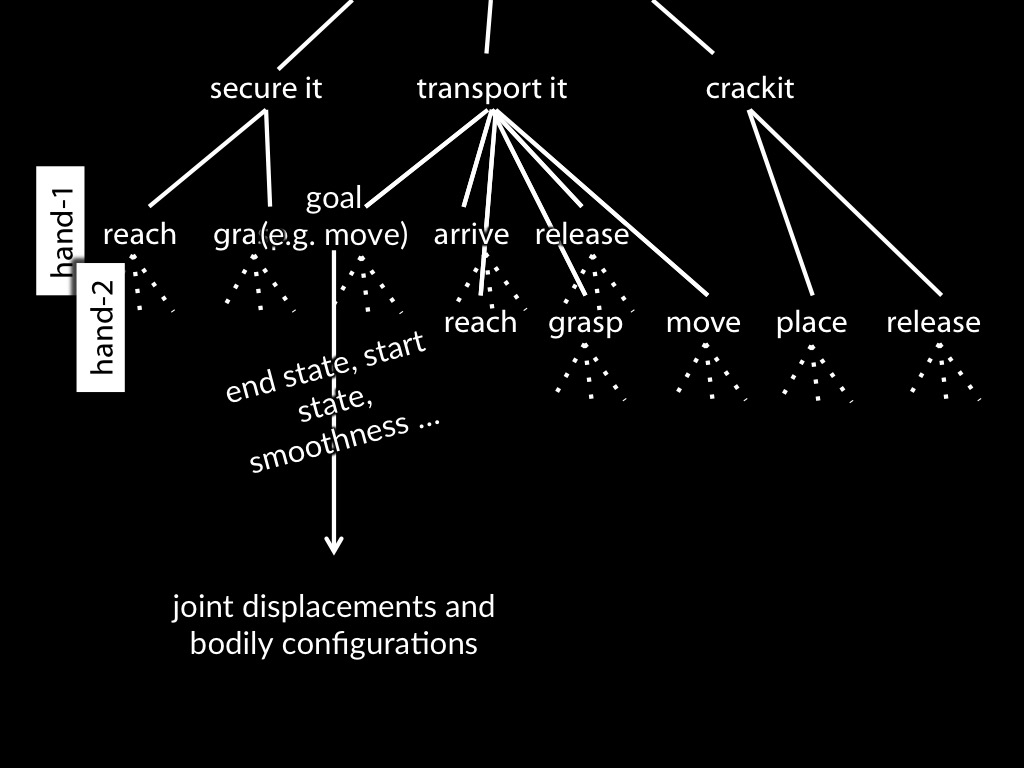
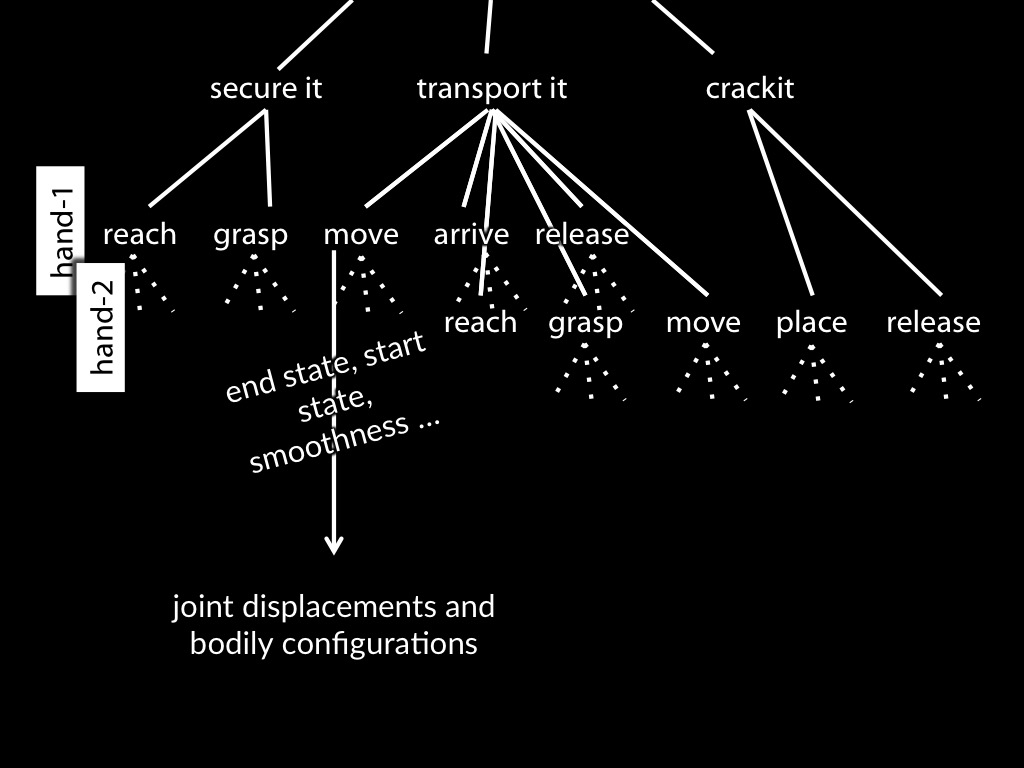
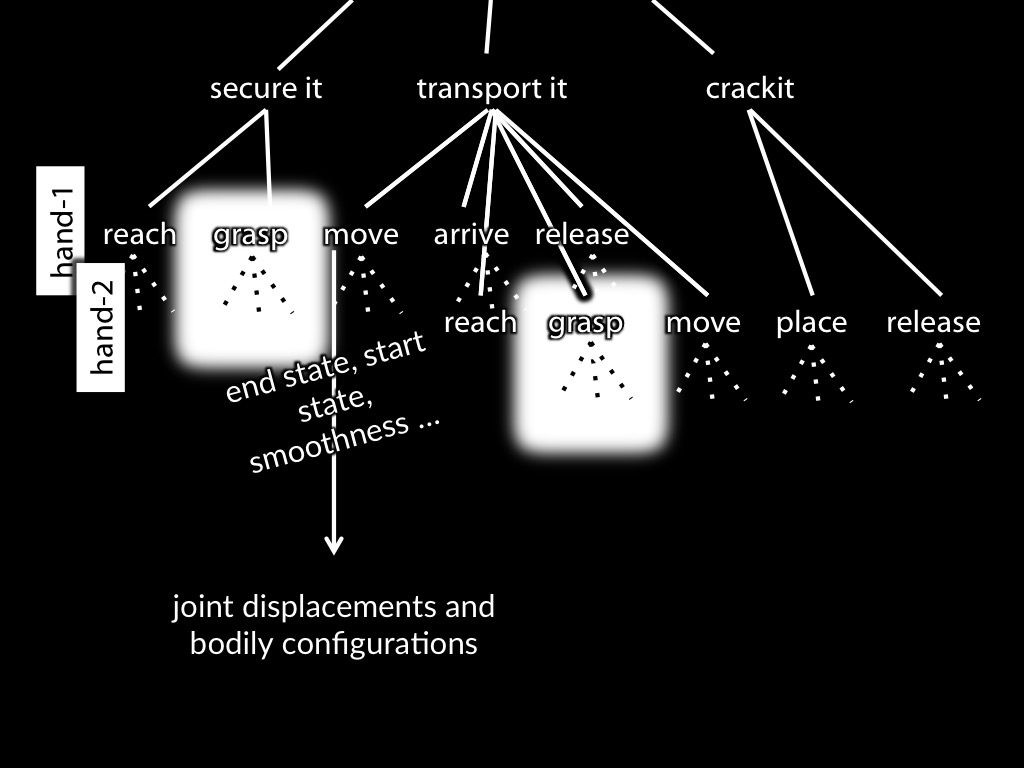
How do we know that outcomes are represented motorically?
background
The Double Life of Motor Representation
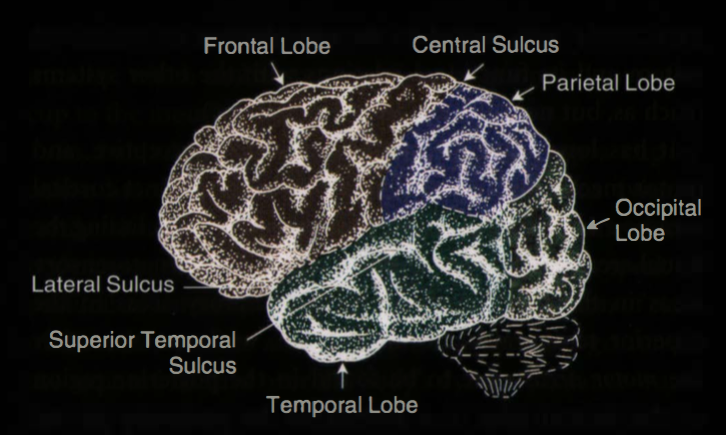
(Rizzolatti & Sinigaglia, 2008, p. figure 1.1)
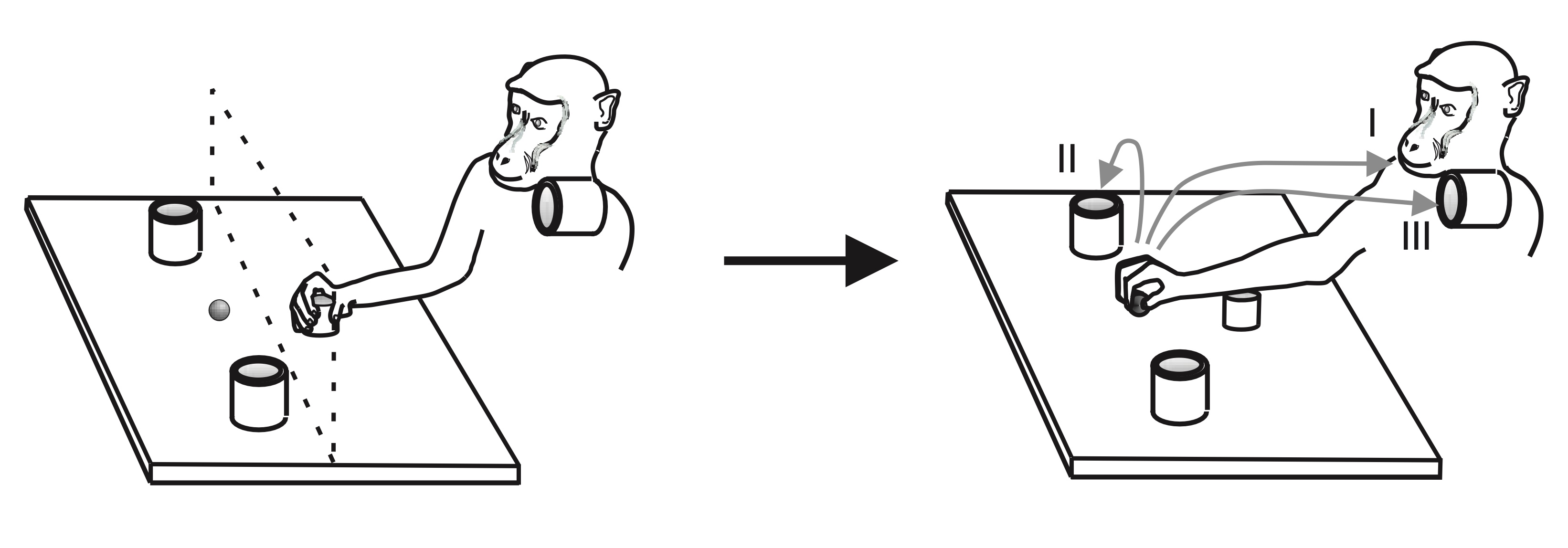
Fogassi et al. (2005, p. figure 1b)
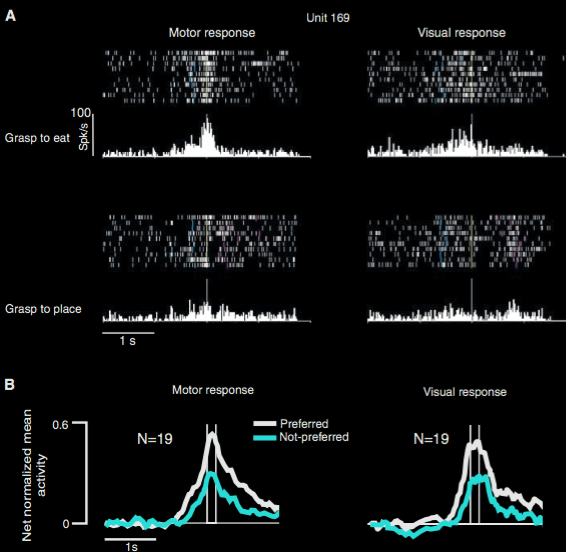

Fogassi et al. (2005, p. figure 5)
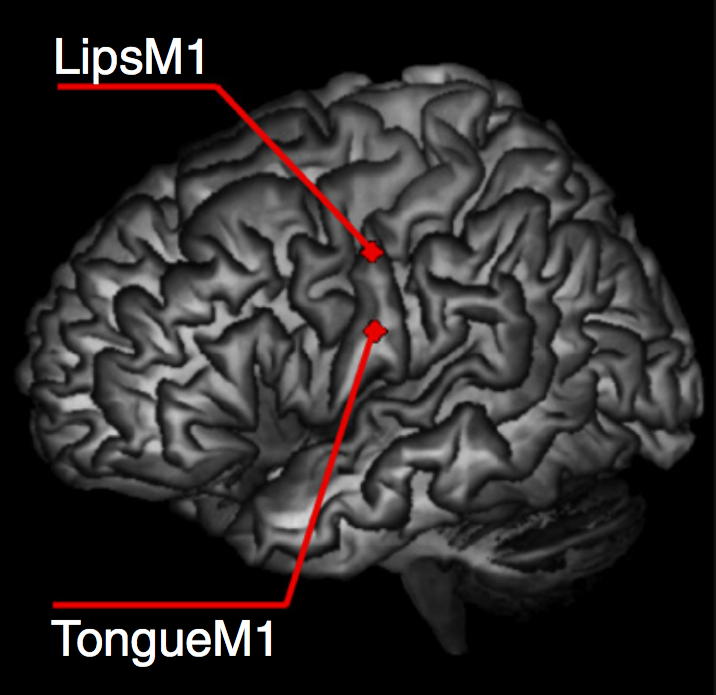
D’Ausilio et al. (2009, p. figure 1)
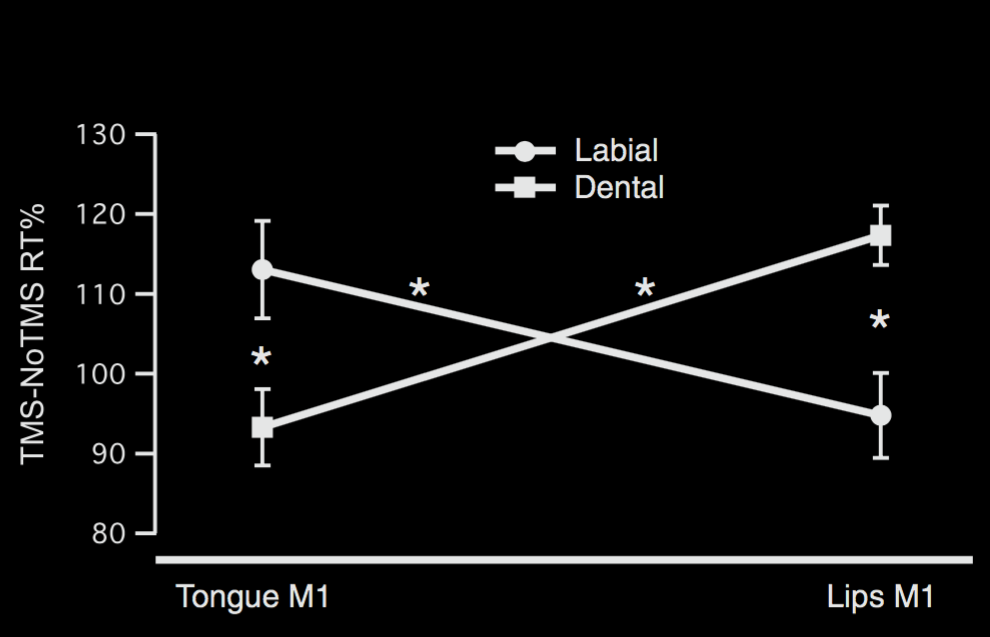
D’Ausilio et al. (2009, p. figure 2)
✔
background
The Double Life of Motor Representation
How do we know that outcomes are represented motorically?
first illustration: same kinematics, different goal
glossary: TMS, MEP


Villiger, Chandrasekharan, & Welsh (2010, p. figure 1AB)
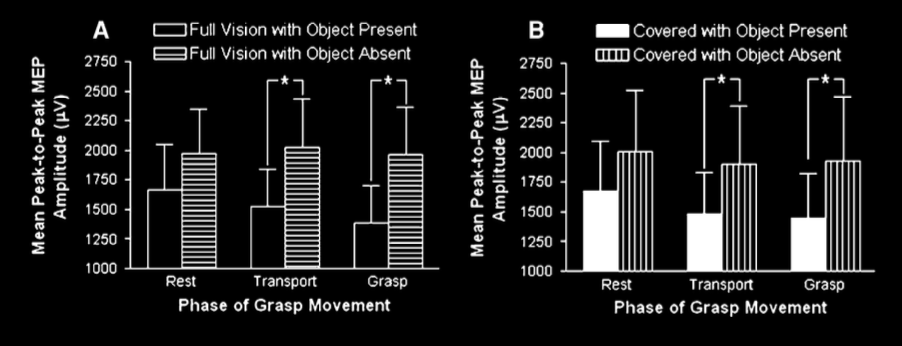
Villiger et al. (2010, p. figure 2)
first illustration: same kinematics, different goal
second illustration: different kinematics, same goal
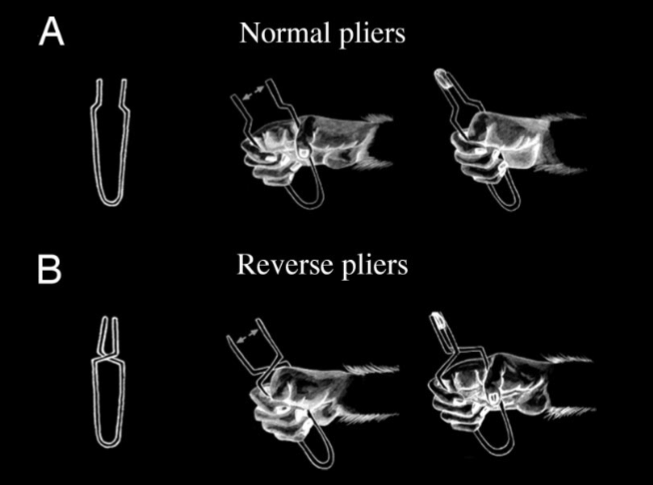
Umiltà et al. (2008, p. figure 1)
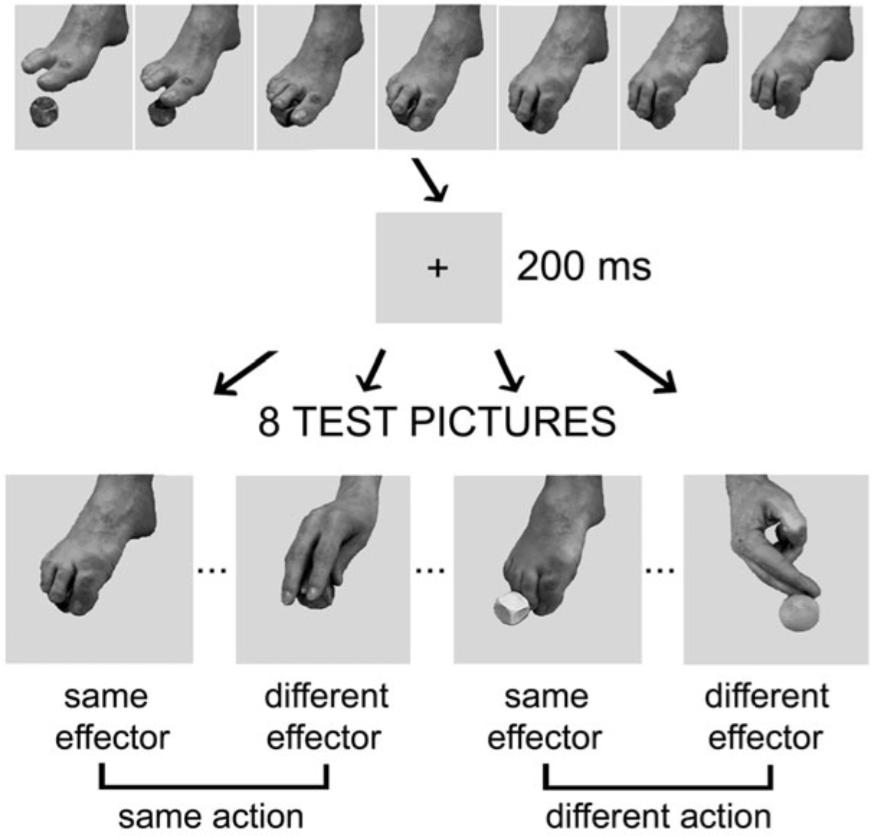
Cattaneo, Sandrini, & Schwarzbach (2010, p. figure 1)
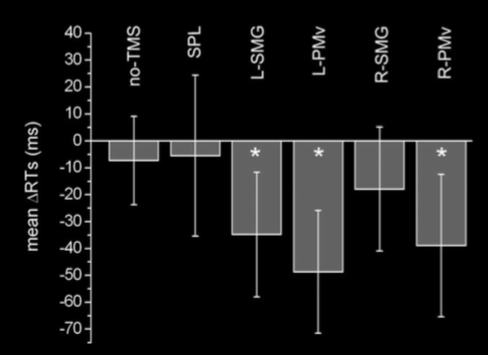
Cattaneo et al. (2010, p. figure 3)
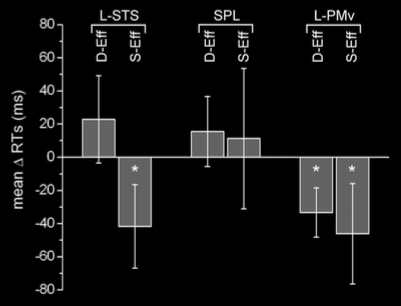
Cattaneo et al. (2010, p. figure 4)

Markers of motor representation ...
1. are unaffected by variations in kinematic features but not goals
2. are affected by variations in goals but not kinematic features
So: 3. carry information about goals (from 1,2)
Also
4. Information about outcomes guides planning-like processes ...




Markers of motor representation ...
1. are unaffected by variations in kinematic features but not goals
2. are affected by variations in goals but not kinematic features
So:
3. carry information about goals (from 1,2)
Also
4. Information about outcomes guides planning-like processes.

some
motor representations (/schema) represent outcomes
‘a given motor act may change ... as a function of what motor act will follow it—a sign of planning’
Cohen & Rosenbaum 2004, p. 294